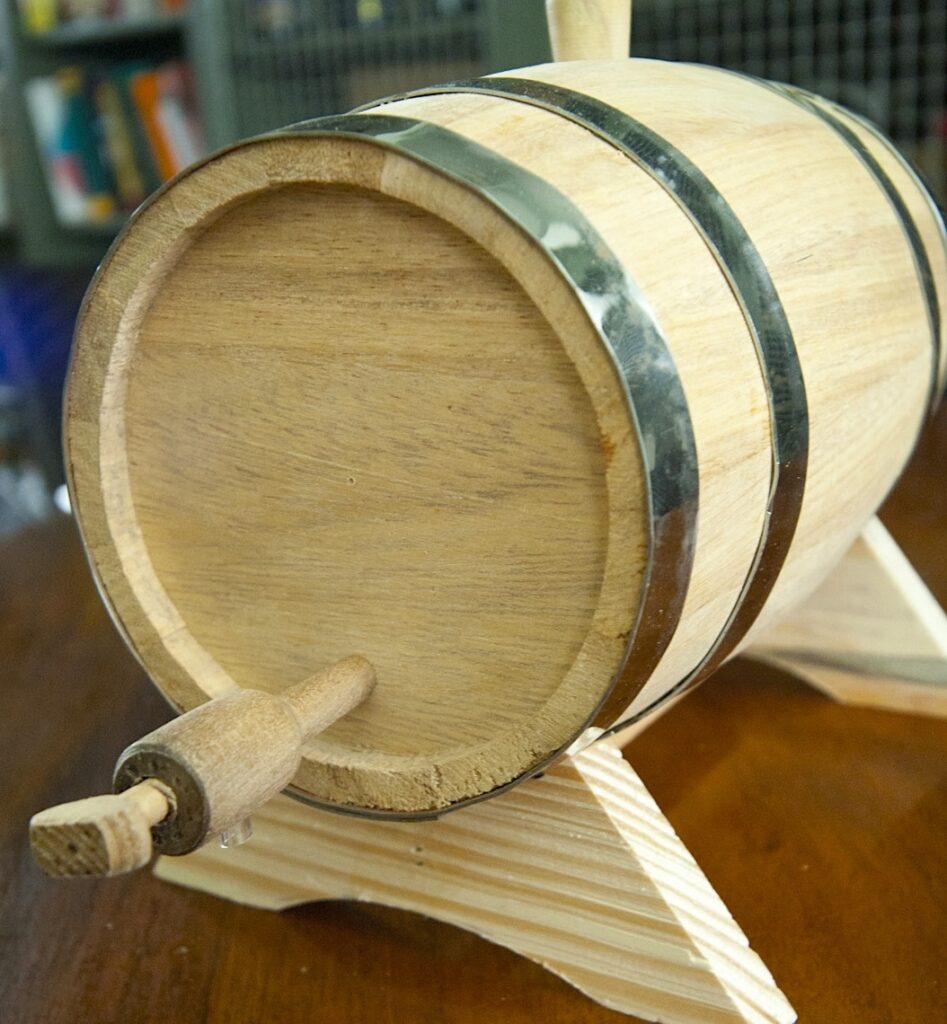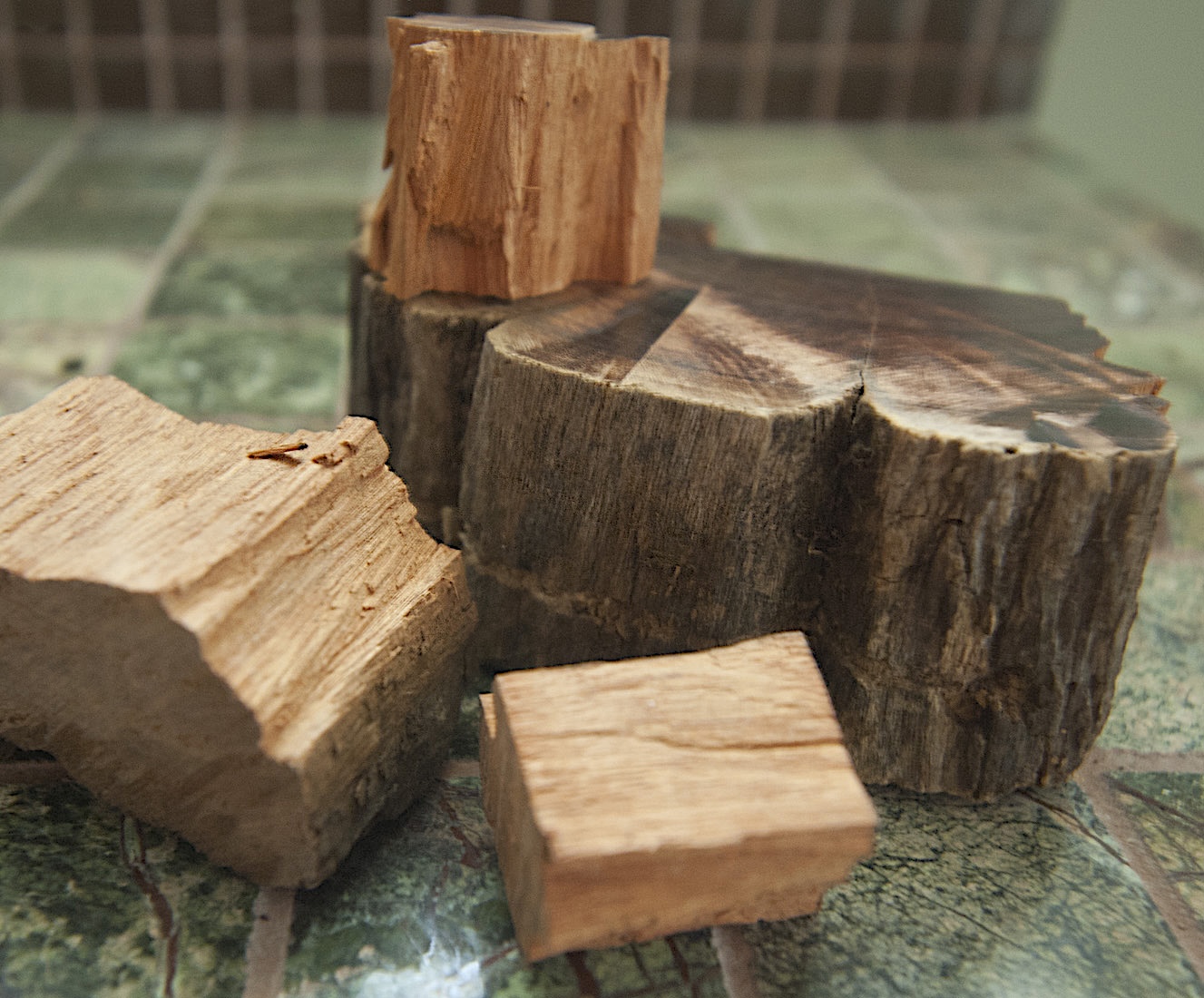© 2015, Randy Mosher
My friend Marcelo from Brazil was in town yesterday and brought me a couple of surprises: A small cask made from umburana wood, meant for aging cachaça, and a slab of a highly aromatic wood referred to in Brazil as “balsam” (Myroxolon balsamum). I couldn’t be more excited.
Most of the wood aging of beer has to this point been done with the same oak types that are traditional for wine. Nothing wrong with that, but opening the process up to the many thousands of wood varieties available offers countless new flavor options to explore.
Both of these wood types are used to age the Brazilian sugar-cane rum called cachaça, along with many other varieties. Umburana is considered one of the best. Although a pale wood as you can see from the photo, it is intriguingly aromatic, adding notes of rich spiciness and floral notes to anything aged in it.
The choice of woods for aging cachaça is partly regional preference and partly convenience, depending on the producer. There are reports of foudres built from staves of many different types of wood. It is typical to have a distillery on just about every sugar cane farm to create cachaça for local consumption and generate cash through a value added product. As a result, many of the distilleries are very small and artisanal, and there are a lot of them. In Minas Gerais state alone, there are reported to be more than 8,000. Although some brands are highly sippable, most cachaça ends up in the national cocktail, the caipirinha (kie’ peer een ya), a simple mix of sugar syrup and cachaça, with as many stomped up limes as you can get into the glass and still leave room for ice. There are more avant-garde recipes incorporating tropical fruits and even chiles, but I’ll save those for another day.
The balsam tree is better known as the source of a highly aromatic resin called balsam of Peru (although it usually comes from El Salvador) that is widely used in perfumery, pipe tobacco and drink flavorings. At Forbidden Root, it’s a minor, but important, component of our root beer formula. It’s difficult to describe, but it’s a rich, heavy scent with a fruity base, a deeply spicy middle and a sweet floral top. I’ve been in a state of near-obsession with it for some time, and am now receiving weirdly entertaining horse veterinary supply catalogues (man, those creatures can get a lot of nasty diseases!) since I ordered a can of the pure resin, sold as hoof dressing. It’s a beautiful, shiny wood, and quite hard as you can tell from the burn marks on top of the slab in the photo.
In Brazil, balsam is considered by many to be a cheater’s wood, as it can add a lot of color and aroma to the delicate spirit in a short time. I’m thinking in beer this might be a very good thing, as it’s rarely advisable to age beer for a few years before packaging, and of course, you can tailor the beer recipe to work with whatever the wood provides.
So what am I going to do with these treasures? I’m thinking I’ll get some white cachaça and fill the barrel up, as it’s too small to be of much use for beer. At 5 Rabbit, we’ve been working on a collaboration with Marcelo’s Cervejaria Colorado brewery, so some of this will probably find its way into a pilot batch or maybe a special firkin. And this is just the start. I’m looking forward to the day we get one of those technicolor wood-striped foudres to make some serious beer in.
Below Marcelo’s gift of a cask made from umburana wood


